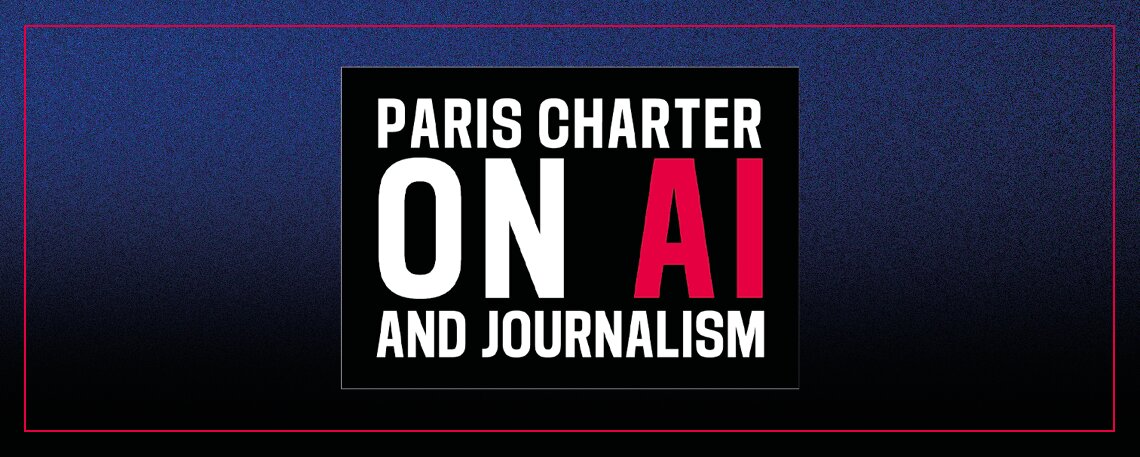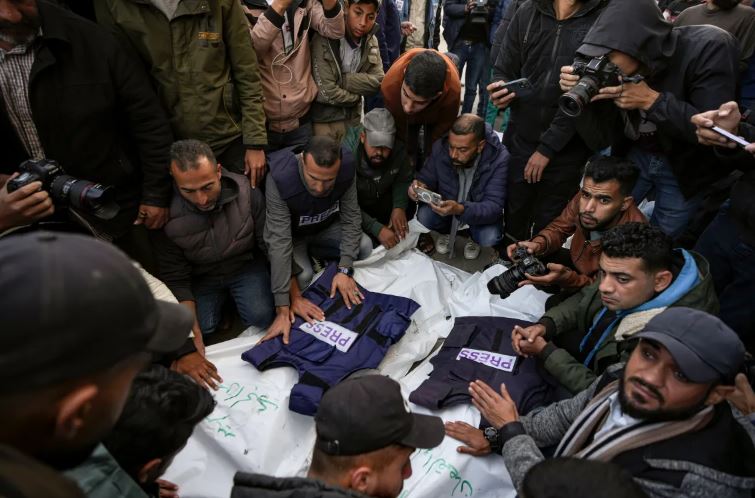
Paris Charter on AI and Journalism
February 12, 2025
Journalism, media, and technology trends and predictions 2025
February 27, 2025February 12, 2025 – CPJ
Introduction
More journalists were killed in 2024 than in any other year since the Committee to Protect Journalists began collecting data more than three decades ago. At least 124 journalists and media workers were killed last year, nearly two-thirds of them Palestinians killed by Israel.
The number of conflicts globally – whether political, criminal, or military in nature – has doubled in the past five years, and this is reflected in the high number of deaths of journalists in nations such as Sudan, Pakistan, and Myanmar. But the toll of conflict on the press is most glaring in the unprecedented number of journalists and media workers killed in the Israel-Gaza war, 85 in 2024, and 78 in 2023.
All of the 2024 killings point to the increased dangers facing reporters and media workers – and the threat that poses to the flow of information worldwide.
The global total of 124 deaths exceeds the record high of 113 killed in 2007, when the Iraq war accounted for almost half of journalist casualties. Outside of Gaza (82) and Lebanon (3), CPJ documented the killing of 39 other journalists and media workers in 16 nations, with the deadliest being Sudan (6), Pakistan (6), Mexico (5), Syria (4), Myanmar (3), Iraq (3), and Haiti (2) during 2024.
CPJ records a journalist’s killing in its database if it has reasonable grounds to believe they may have been killed in relation to their work: either killed accidentally in a conflict zone or on a dangerous assignment, or killed deliberately because of their journalism. See our methodology here.
CPJ research found that at least 24 journalists worldwide were deliberately killed because of their work in 2024. In Gaza and Lebanon, CPJ documented 10 cases where journalists were deliberately targeted. (These cases are defined as “murder” in CPJ’s long-standing classification system. This classification should not be taken to suggest that any of the other killings in our database are considered lawful, but rather that CPJ has not been able to determine whether that individual was singled out specifically in relation to their work.)
The murder cases include Ismail Al Ghoul, a 27-year-old Palestinian journalist working for the Al Jazeera Arabic TV channel, who was killed in July with his colleague Rami Al Refee, by an Israeli drone strike on their car. Al Ghoul and Al Refee were leaving a refugee camp near Gaza City where they had been reporting.
In a July 31 statement, Al Jazeera described the murders as “part of a systematic targeting campaign against the network’s journalists and their families.” Israel confirmed the killing, alleging that Al Ghoul was a Hamas operative, and producing dubious evidence suggesting Al Ghoul received a military ranking when was 10 years old, which was questioned by experts and rejected by Al Jazeera. The tactic of smearing journalists as terrorists without providing evidence is one increasingly adopted by both authoritarian regimes and supposedly democratic countries alike, and is an issue that CPJ has called repeatedly on the international community to address.
CPJ is investigating 20 further killings in which it believes Israel may have specifically targeted journalists. Journalists are considered civilians in international humanitarian law and targeting them in a conflict is a war crime.
The other 14 journalists whose deaths CPJ was able to categorize definitively as murders in 2024 lived in Haiti, Mexico, Pakistan, Myanmar, Mozambique, India, Iraq, and Sudan. In addition to those murdered, CPJ documented numerous work-related killings of journalists caught in combat or crossfire, or while they were on dangerous assignments.
Among the 85 journalists killed by Israel last year were Ahmed Abu Skheil and his sister, Zahraa Abu Skheil, who both died in a school bombing in November, and whose three journalist cousins were also killed in March. In Lebanon, Wissam Kassem, Ghassan Najjar, and media worker Mohammed Reda were murdered in an Israeli strike in southern Lebanon; and 18-year-old AlHassan Hamad, a freelance photographer killed in a drone strike on October 6, the youngest journalist whose death CPJ documented in 2024.
In Sudan, where almost two years of devastating civil war have left tens of thousands dead and millions displaced, CPJ found that three journalists were killed in connection with their work and is investigating the motive for the killing of a fourth; two media workers also were killed. Pakistan, which had not had a journalist killed since 2021, also reached six deaths as political unrest and media censorship surged. These nations had the second-highest number of journalists killed globally in 2024, after Israel.
More than one-third – 43 – of all journalists and media workers killed were freelancers – another grim new record for self-employed members of the press who often face the most danger because they have the fewest resources. Thirty-one of those freelancers were killed in Gaza, rising from 14 in 2023. Many Gaza journalists became freelancers after their outlets were destroyed, their coverage proving crucial for global media outlets because Israel has barred foreign journalists from entering the Strip except on tightly controlled visits led by the military.

